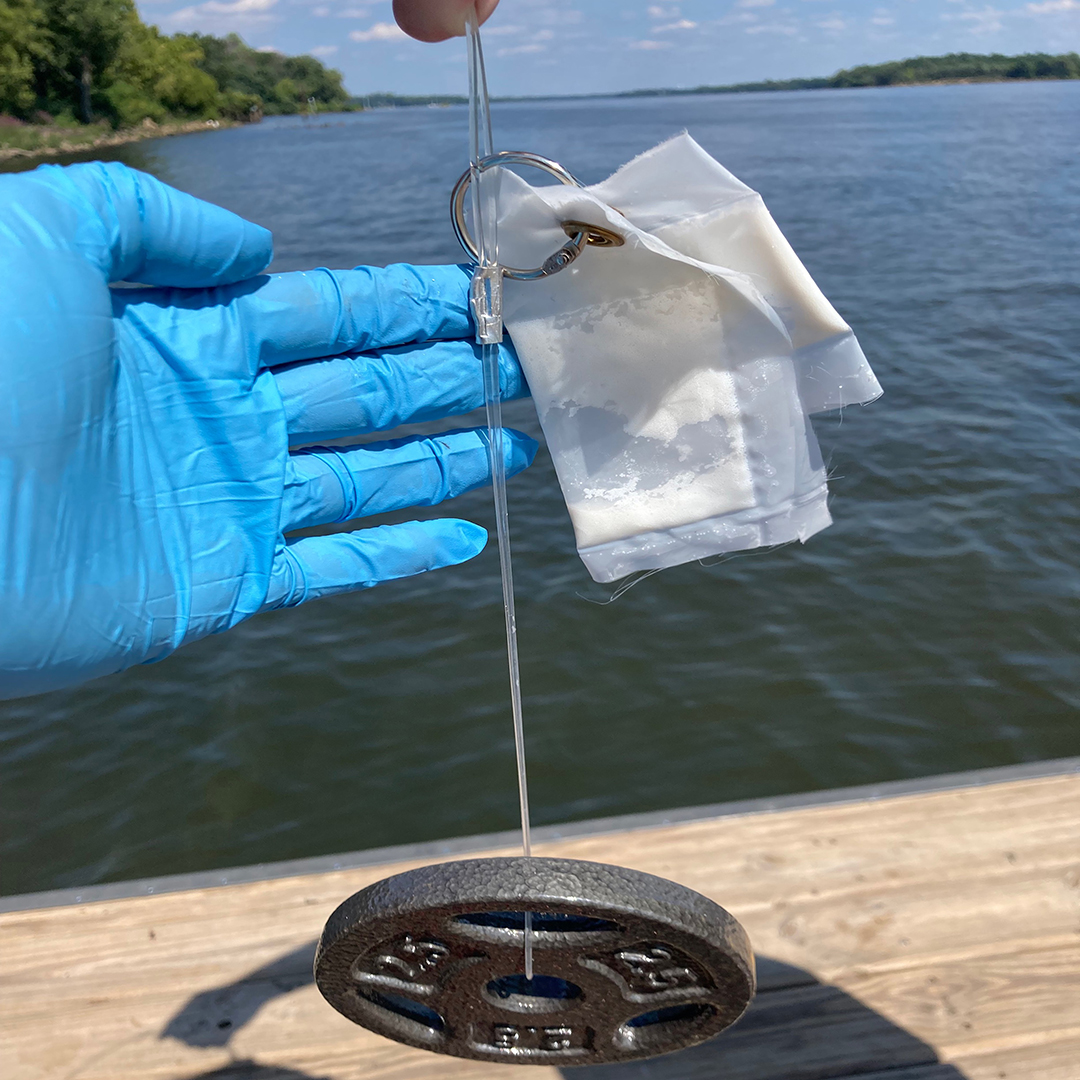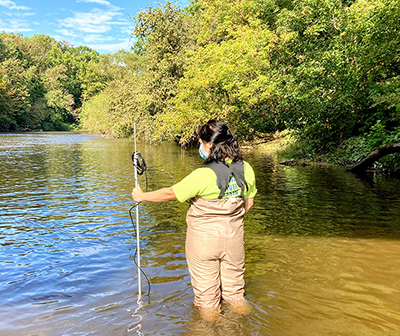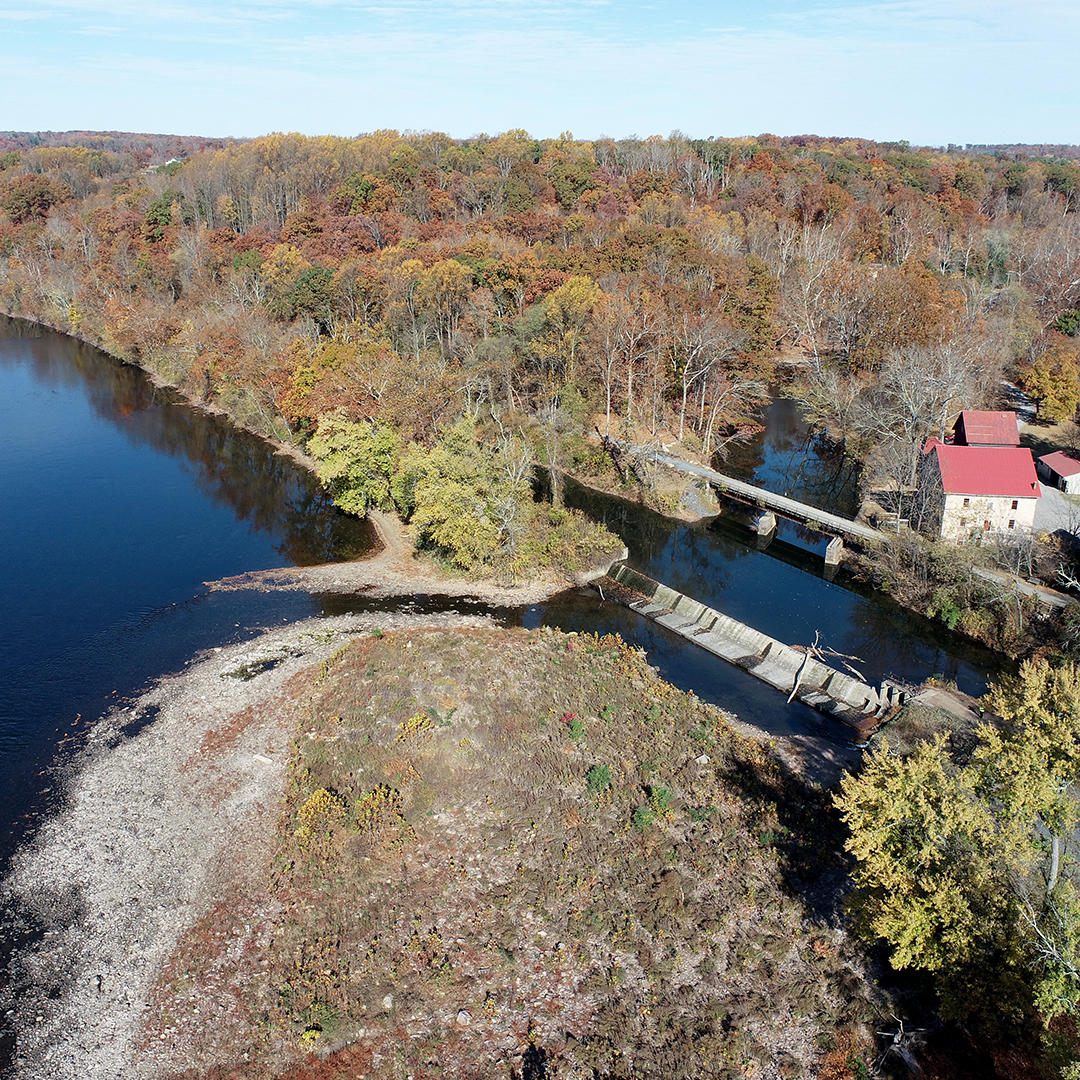Delaware • New Jersey • Pennsylvania
New York • United States of America
- Aquatic Life Designated Use Project
- Bacteria Monitoring
- Biomonitoring Program
- Chlorides Monitoring
- Contaminants of Emerging Concern
- Delaware Estuary Water Quality Monitoring Program
- Dissolved Oxygen and Nutrients
- Modeling
- Other Monitoring (e.g., Toxicity, Fish Tissue, Metals)
- PCBs and PMPs
- Special Protection Waters (SPW)
- Water Resource Data Sets
 |
| SPATT bags about to be deployed in the Delaware River. Photo by the DRBC. |
Ambient Toxicity Monitoring
As part of ongoing programs to control toxic substances in the Delaware Estuary, the DRBC conducts periodic monitoring of ambient water toxicity in the estuary and has requested monitoring of acute and chronic effluent toxicity by dischargers.
• Learn more about Ambient Toxicity Monitoring
Cyanotoxin Study
The DRBC is using the SPATT (Solid Phase Adsorption Toxins Tracking) methodology to track the presence or absence of cyanotoxins in the Delaware River. As drinking water intakes are situated along the Delaware River, it is important to understand if, and where, algal toxins are detected from a human health standpoint.
• Learn more about DRBC's Cyanotoxin Study
Fish Tissue Monitoring
Since 1990, DRBC has periodically sampled tissues of resident fish species in the non-tidal and tidal portions of the main stem Delaware River.
Data collected by DRBC help inform Fish Consumption Advisories issued by certain Basin states.
 |
| DRBC staff takes a flow measurement in the Neshaminy Creek. Photo by DRBC. |
Monitoring for Metals
DRBC monitors metals, such as copper, aluminum, zinc, nickel, and mercury, in ambient water, sediment, and tissues of aquatic life of the Delaware Estuary to ensure compliance with water quality criteria.
• Learn more about Metals Monitoring
Sediment Sampling
DRBC samples sediment to monitor for PCBs, as well as for chlorinated pesticides, PFAS, metals and dioxin/furans.
 |
| Low flows in the Delaware River at Prallsville Mills. Photo by the DRBC. |
As needed, the DRBC performs various monitoring studies before, during and after low or high flow conditions (droughts, floods) to better understand impacts to habitat. Staff is also interested in how warmer air temperatures affect water temperatures.
In addition to sample collection and basic chemistry monitoring, staff can deploy HOBO meters to collect continuous data and take photography/video using a small, unmanned aircraft system (sUAS, i.e., a drone).
Thermal Imaging to Identify Heat Dissipation
Using a drone equipped with a thermal imaging camera, DRBC staff will perform thermal plume surveillance in the upper Delaware River.
This monitoring would target areas in the upper Delaware that support cold water fisheries. This data will help assess the accuracy of near-field modeling of heat dissipation areas and allow us to visualize and identify undocumented thermal plumes. Understanding if undocumented thermal plumes are occurring is important, as warmer waters impact cold water fish species.
Upper Delaware Low Flow Habitat Study
In support modeling efforts to better understand how low flows affect habitat, during times of low flow, staff will measure flow and depth at various locations in the upper Delaware River.
Copyright © Delaware River Basin Commission,
P.O. Box 7360, West Trenton, NJ 08628-0360
Phone (609)883-9500; Fax (609)883-9522
Thanks to NJ for hosting the DRBC website